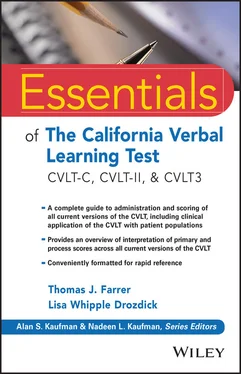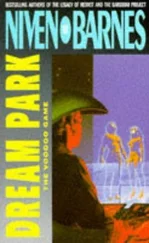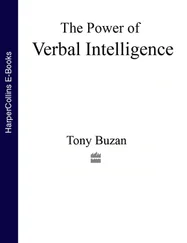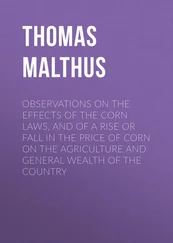RESEARCH FOUNDATION
Standardization and Psychometric Properties
Prior to evaluating the reliability data on the CVLT editions, it is important to note that estimates of reliability pose particular difficulties in measures of learning and recall. Measures of internal reliability do not accurately describe the reliability of memory measures due to item score interdependence. Recalling one word on a trial influences the recall of other words on a trial and also increases the likelihood of recalling the same word on further trials. For this reason, measures of test-retest reliability or alternate form reliability provide greater insight into the reliability of memory measures, although they are influenced by practice effects. Error measures or scores with limited variability also produce lower reliabilities due to skewed distributions. These limitations of traditional measures of reliability should be considered when interpreting the reliabilities described for the CVLT-C, CVLT-II, and CVLT3.
CVLT-C : The standardization sample for the CVLT-C consisted of 920 children selected to form a representative sample of the U.S. population, based on March 1988 U.S. Census data. It was stratified based on age, sex, race/ethnicity, education level, and geographic region. Twelve normative age bands were created, each included 1 year of age. Each age band for ages 5–12 included 80 children and bands for ages 13–16 included 70 children. Sex was roughly equal within each age group; all other demographic variables roughly matched the U.S. Census data.
Due to the interdependent nature of responses on word list recall, the CVLT-C utilized several measures of internal consistency. Internal consistency was evaluated using three approaches: comparing overall performance on odd and even numbered learning trials, across-semantic category consistency, and across-word consistency. The odd-even and across-word approaches yielded average correlations of 0.88 and 0.83, respectively, for Trials 1–5. The across-semantic category approach yielded an average correlation of 0.72. Detailed information on how these consistency estimates were defined and derived is provided in the CVLT-C Manual .
The test-retest sample consisted of 106 children tested between 10 and 42 days apart. Results are reported for three age groups: 8-, 12-, and 16-year-olds. Memory and learning measures are particularly susceptible to practice effects that lower test-retest correlations (Strauss, Sherman, & Spreen, 2006) due to repeated exposure of the stimuli to be recalled. Stability coefficients for 13 CVLT-C scores are listed in Rapid Reference 1.6. Test-retest coefficients ranged from 0.61 to 0.73 for the Trials 1–5 T score, from 0.26 to 0.77 for the recall z -scores, and from 0.17 to 0.90 for the error z -scores.
CVLT-II : The standardization sample for the CVLT-II consisted of 1,087 individuals selected to form a representative sample of the U.S. population, based on the March 1999 U.S. Census data. It was stratified based on age, sex, race/ethnicity, education level, and geographic region. Seven normative age bands were created: 16–19, 20–29, 30–44, 45–59, 60–69, 70–79, and 80–89. Each age band included between 107 and 200 individuals. Sex was evenly represented for ages 16–59; in ages 60–89 more females were included than males, reflecting the sex distribution in the population at the older ages.
Internal consistency was evaluated using the three approaches introduced in the CVLT-C: comparing overall performance on odd and even numbered learning trials, across-semantic category consistency, and across-trial word consistency. The odd-even and across-semantic category approaches yielded average correlations of 0.94 and 0.83, respectively, for Trials 1–5. The across-trial word consistency approach yielded an average correlation of 0.79. Estimates obtained in a clinical sample of 124 neuropsychiatric patients produced similar reliability coefficients. Detailed information on how these consistency estimates were defined and derived is provided in the CVLT-II Manual .
Rapid Reference 1.6
Stability Coefficients for 13 CVLT-C Scores, by Age
| Score |
Age 8 average test-retest r 12 |
Age 12 average test-retest r 12 |
Age 16 average test-retest r 12 |
| List A Trials 1–5 Total |
0.73 |
0.73 |
0.61 |
| List B Free Recall Total |
0.59 |
0.26 |
0.66 |
| Short-Delay Free Recall |
0.40 |
0.77 |
0.48 |
| Short-Delay Cued Recall |
0.75 |
0.49 |
0.59 |
| Long-Delay Free Recall |
0.59 |
0.62 |
0.60 |
| Long-Delay Cued Recall |
0.69 |
0.69 |
0.59 |
| Semantic Cluster Ratio |
0.56 |
0.58 |
0.53 |
| Perseverations |
0.90 |
0.32 |
0.31 |
| Free-Recall Intrusions |
0.74 |
0.56 |
0.85 |
| Cued-Recall Intrusions |
0.59 |
0.17 |
0.74 |
| Recognition Hits |
0.38 |
0.24 |
0.80 |
| Discriminability |
0.55 |
0.37 |
0.78 |
| False Positives |
0.62 |
0.35 |
0.78 |
Standardization data from the California Verbal Learning Test, Children's Version (CVLT-C) . Copyright ©1994 NCS Pearson, Inc. Used with permission. All rights reserved.
The test-retest sample consisted of 78 individuals tested between 9 and 49 days apart. Stability coefficients for 18 CVLT-II scores are listed in Rapid Reference 1.7. Test-retest coefficients were 0.82 for the Trials 1–5 T score, ranged from 0.57 to 0.88 for the recall z -scores, and from 0.27 to 0.86 for the error z -scores.
Due to the addition of the Alternate Form, alternate form reliability was also provided. The Alternate Form sample consisted of 288 nonclinical adults tested between 0 and 77 days apart. The administrations were counterbalanced, with 155 receiving the Standard Form first followed by the Alternate Form and 133 receiving the Alternate Form first followed by the Standard Form. Correlation coefficients for the 18 scores that can be hand scored are listed in Rapid Reference 1.8. Correlation coefficients were 0.79 for the Trials 1–5 T score, ranged from 0.51 to 0.76 for the recall z scores, and ranged from 0.27 to 0.76 for the error z scores.
Rapid Reference 1.7
Stability Coefficients for CVLT-II Scores, by Age
| Score |
Average test-retest r 12 |
| Trials 1–5 Correct ( T score) |
0.82 |
| Trial 1 Correct |
0.57 |
| Trial 2 Correct |
0.60 |
| Trial 3 Correct |
0.58 |
| Trial 4 Correct |
0.82 |
| Trial 5 Correct |
0.76 |
| Trial B Correct |
0.61 |
| Short-Delay Free-Recall Correct |
0.81 |
| Long-Delay Free-Recall Correct |
0.88 |
| Semantic Clustering (Chance-Adjusted) Trials 1–5 |
0.74 |
| Total Learning Slope, Trials 1–5 |
0.27 |
| Total Intrusions |
0.63 |
| Total Repetitions |
0.30 |
| Long-Delay Yes/No Recognition Hits |
0.79 |
| Long-Delay Yes/No Recognition False Positives |
0.72 |
| Total Recognition Discrimination |
0.86 |
| Total Response Bias |
0.57 |
Standardization data from the California Verbal Learning Test, Second Edition Adult Version (CVLT-II) . Copyright © 2000 NCS Pearson, Inc. Used with permission. All rights reserved.
Читать дальше












